A limited amount of nitrogen is a one of the more prevalent nutrient deficiencies amongst marijuana plants. Nitrogen is definitely a very essential nutrient for marijuana.
When cultivating cannabis, understanding nutrient management is vital, and nitrogen plays a crucial role in the health and development of your plants. A nitrogen deficiency can have significant impacts, hindering the growth and potentially reducing the quality and yield of your cannabis crop. With nitrogen being a cornerstone of chlorophyll production and amino acids, it is indispensable for photosynthesis and protein synthesis within the plant. If your cannabis plants are not getting enough nitrogen, you might observe yellowing of the lower leaves and a general light green coloration in the foliage, a clear sign of distress.
Identifying a nitrogen deficiency promptly allows you to adjust your feeding regimen and avert further damage to the plant. However, the intricacy comes with distinguishing this deficiency from other issues that can cause similar symptoms. Plants suffering from inadequate nitrogen will not only display yellowing leaves, but they will also exhibit stunted growth and poor development of new leaves. Unlike other nutrients, nitrogen is mobile within the plant, so older leaves will often transfer their nitrogen to new growth, which is why symptoms appear first in the older leaves.
Addressing nitrogen deficiency involves enriching your plant’s environment with the appropriate nutrients. But caution is necessary: while nitrogen is essential, too much nitrogen can lead to toxicity, which comes with its own set of problems, making it essential to strike the right balance. Your cannabis plants rely on you to provide them with the ideal conditions for growth, and recognizing the signs of nitrogen deficiency is the first step in keeping your plants robust and healthy.
Understanding Nitrogen and Its Role
Nitrogen is essential for cannabis growth, contributing significantly to chlorophyll production and photosynthesis. Its deficiency or excess can profoundly affect plant health.
Significance of Nitrogen for Cannabis Plants
Nitrogen is a cornerstone for the health and development of cannabis plants. It’s a key component of chlorophyll, the molecule required for photosynthesis which fuels plant growth. Nitrogen also contributes to the production of amino acids, the building blocks of proteins, making it crucial for your plant’s vitality.
Nitrogen as a Mobile Nutrient
As a mobile nutrient, nitrogen can move to where it’s needed most, typically the new growth. This mobility means that signs of nitrogen deficiency often appear first in the older leaves. The older leaves may turn yellow as nitrogen is transported to support the new, green leaves.
The Nitrogen Cycle in Soil
The nitrogen cycle is a transformation process that includes nitrogen fixation, nitrification, and ammonification. In the soil, organic matter breaks down, releasing nitrogen in a form that your cannabis plants can absorb. Maintaining proper soil pH levels is crucial as it affects the availability of nitrogen.
Nitrogen Absorption by Cannabis Roots
Your cannabis plant’s roots absorb nitrogen primarily as nitrate (NO3^−) and ammonium (NH4^+). A balance of these forms, determined by soil pH, is essential for optimal uptake. Water-soluble nitrogen compounds make it easier for roots to absorb this critical nutrient.
Nitrogen Deficiency vs. Excess
Recognizing the balance between deficiency and excess nitrogen is pivotal. Yellow leaves may indicate deficiency, leading to stunted growth and poor development. Conversely, too much nitrogen can cause nutrient lockout, where plants can’t absorb other necessary nutrients, resulting in dark, claw-like leaves.
Identifying Nitrogen Deficiency
When you grow cannabis, nitrogen is a key nutrient for healthy development. Recognizing nitrogen deficiency can help you correct issues promptly to maintain plant health and yield.
Early Signs in Cannabis Plants
Nitrogen deficiency typically manifests first in the older, lower leaves of your cannabis plants. The leaves may appear pale green and then turn a lighter shade, signaling chlorosis, which is a reduction in chlorophyll.


Progression to Lower Leaves
As the deficiency advances, the yellowing or chlorosis moves to more lower leaves. This happens because nitrogen is a mobile nutrient, and the plant relocates it to support new growth, leaving the older leaves deprived.
Comparison with Other Nutrient Deficiencies
Unlike deficiencies of potassium, phosphorus, magnesium, calcium, iron, copper, and zinc, nitrogen deficiency uniquely targets older leaves first. You will not typically see the brown spots or leaf curling that often accompany other nutrient shortages.
Effects on Plant Growth and Development
If nitrogen deficiency occurs during the vegetative stage, it can result in notably stunted growth. During the flowering stage, a lack of nitrogen can dramatically affect yield since the plant cannot produce new cells efficiently.
Leaf Symptoms and Discoloration
Yellow leaves are a hallmark of nitrogen deficiency, but look for other symptoms as well:
- Early stages: Leaves become pale and may exhibit slight yellowing.
- Advanced stages: Entire leaves turn yellow including veins, and may eventually become brown or die off.
Stay vigilant for these signs to ensure your cannabis plants receive an adequate supply of nitrogen and other crucial nutrients for optimal health and productivity.
Managing Nitrogen Deficiency
Effective management of nitrogen deficiency is critical to ensure healthy cannabis plant growth. This involves adjusting soil conditions, considering both organic and chemical fertilizers, and taking preventive actions to maintain optimal nitrogen levels throughout various growth stages.
Adjusting Soil and Root pH Levels
To resolve nitrogen deficiency, you need to monitor and adjust the pH of both the soil and the root zone. Cannabis plants prefer a soil pH between 6.0 and 7.0, which allows for proper nitrogen uptake. If the pH is too low (acidic), adding lime can help increase it. Conversely, if the soil is too alkaline, sulfur compounds may be needed to reduce the pH.
Organic and Chemical Fertilizers
Addressing nitrogen deficiency requires the correct fertilizers. Organic options include blood meal, fish meal, manure, and compost – all of which release nitrogen slowly, improving soil health over time. For a quicker fix, chemical fertilizers like ammonium nitrate or calcium nitrate can be used. Pre-mixed nutrient solutions designed for cannabis can also offer balanced nourishment, including essential nitrogen.
Alternative Nutrient Sources
Do not overlook alternative sources such as fish emulsion, worm castings, or compost teas. These not only provide nitrogen but also enrich the soil with beneficial microorganisms. They should be applied in accordance with the product instructions to prevent overfeeding, maintaining adequate moisture and organic matter in the soil.
Optimizing the Vegetative and Flowering Stages
During the vegetative phase, cannabis plants require more nitrogen to support leaf and stem growth. As they transition to the flowering cycle, nitrogen demand decreases. Adjust fertilization practices accordingly, reducing nitrogen inputs as plants enter the blooming or budding stages to prevent nutrient burn and maximize flower production.
Prevention of Nitrogen Deficiency
Lastly, preventative measures are key to avoiding nitrogen deficits. Incorporating organic matter such as compost and implementing regular soil testing can help you anticipate and prevent issues. By maintaining a consistent feeding schedule and avoiding drastic soil pH fluctuations, you can greatly reduce the risk of nitrogen deficiency affecting your cannabis plants.


Broader Implications of Nitrogen Deficiency
Nitrogen deficiency in cannabis can significantly affect the plant’s development and the quality of your yields. Understanding how it interacts with other agricultural factors is crucial for optimal growth and harvest.
Impact on Yields and Harvest Quality
When your cannabis plants are nitrogen-deficient, they can’t synthesize enough chlorophyll, which is vital for photosynthesis. As a result, you may notice smaller yields with diminished quality. Harvest time is also pivotal; nitrogen deficiency can delay the maturation of the plant, leading to a later harvest. This can affect the taste and potency, as the buds might not develop the desired aromatic oils and terpenes properly.
Interactions with Pests and Diseases
A plant weakened by nitrogen deficiency becomes more susceptible to pests and diseases. Bugs, such as spider mites and aphids, often attack stressed cannabis plants. Diseases like mold may also take hold, as the plant’s natural resistance is compromised. Keeping an eye out for the telltale yellowing of leaves will help you act fast to mitigate these risks.
Influence on Bud and Protein Formation
Nitrogen plays a critical role in the bud-making process by participating in the formation of amino acids, the building blocks of proteins. Nitrogen deficiency can impede protein synthesis, which is essential not just for plant growth but also for the development of DNA and other vital processes. This will directly influence the size and quality of the buds that your cannabis plants produce.
Environmental Factors Affecting Nitrogen Levels
Your plant’s ability to absorb nitrogen is influenced by environmental factors such as temperature, moisture, and the amount of organic matter in the soil. Cold soils may immobilize nitrogen, making it unavailable to your plants, whereas too much moisture can lead to nitrogen leaching away. Ensuring optimal environmental conditions will help maintain adequate nitrogen levels in the soil.
Advanced Topics in Cannabis Cultivation
In advancing your cannabis cultivation techniques, understanding the intricate relationship between growth mediums, nutrient compositions, and their impact on your plants is crucial. These components must work harmoniously to prevent deficiencies and optimize plant health.
Hydroponics and Nutrient Solutions
When utilizing hydroponics for cannabis cultivation, your choice in nutrient solutions is fundamental. Customized nutrient systems are employed to cater to the plant’s phase of growth, ensuring the presence of essential macronutrients and micronutrients. Remember that monitoring the concentration and pH levels of your solution regularly is vital for optimal absorption by the roots, preventing potential nutrient deficiencies.
The Role of Secondary Macronutrients and Micronutrients
Your plants necessitate more than just primary nutrients; secondary macronutrients such as calcium, magnesium, and sulfur play critical roles in plant development and resilience against stress. Micronutrients including manganese should be provided in smaller quantities but are no less important, impacting functions from enzyme activation to photosynthesis.
Technical Analysis of Soil pH and Nutrient Availability
Managing soil pH is paramount in maximizing nutrient availability. Ideal pH ranges facilitate optimal uptake; however, deviations can lock out crucial nutrients, leading to deficiencies. Aiming for a slightly acidic pH can enhance the availability of most nutrients for your cannabis plants. Adjustments to pH levels should be made cautiously, utilizing pH testing kits to guide your amendment practices.
Frequently Asked Questions
Navigating through the nuances of nitrogen management in cannabis can be complex. This section is designed to guide you through the essential remedial steps, symptoms to look out for, and best practices for dealing with nitrogen deficiency.
How can you correct nitrogen deficiency during the flowering stage of cannabis?
To correct nitrogen deficiency during the flowering stage, you should introduce a balanced fertilizer with moderate nitrogen content that won’t disrupt the flowering process. Care must be taken to not over-fertilize, as this could lead to nutrient burn or affect the final flavor profile of the buds.
What are the primary symptoms indicating a nitrogen deficiency in cannabis?
The primary symptoms of nitrogen deficiency in cannabis include yellowing of the lower leaves and a general pale green coloration in the foliage. Over time, this yellowing can progress, causing the affected leaves to brown and eventually die off.
What natural sources can provide nitrogen to cannabis plants?
Organic sources such as fish meal, blood meal, and composted manure are natural amendments that can increase nitrogen levels in the soil. These options release nitrogen slowly and reduce the risk of nitrogen burn compared to synthetic fertilizers.
What steps should be taken to quickly address a nitrogen deficiency?
When quickly addressing a nitrogen deficiency, it’s important to lightly supplement the soil with a fast-acting nitrogen source like a water-soluble fertilizer. Adjusting the pH level of the soil to the optimal range of 6.0-7.0 may also help increase nutrient availability.
How long does it typically take for a cannabis plant to recover from nitrogen deficiency after treatment?
A cannabis plant may begin to show signs of recovery from nitrogen deficiency within a week after treatment, but full recovery may take several weeks as the plant rebuilds its chlorophyll and regains its healthy green color.
Can using cannabis nitrogen supplements prevent nitrogen toxicity, and how should they be applied?
Using nitrogen supplements can help prevent deficiencies but can also lead to toxicity if not used correctly. They should be applied according to the product instructions, typically starting with a reduced dose to gauge the plant’s response before gradually increasing to the recommended amount. Regular monitoring of the plant’s appearance and soil nutrient levels is crucial to avoid over-fertilization.
Robert

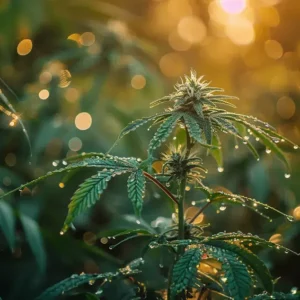
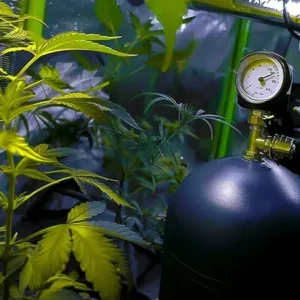
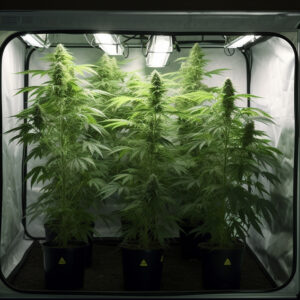
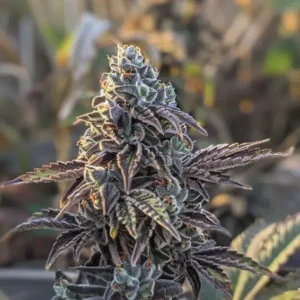
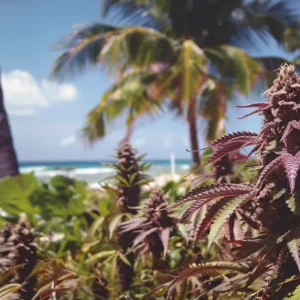

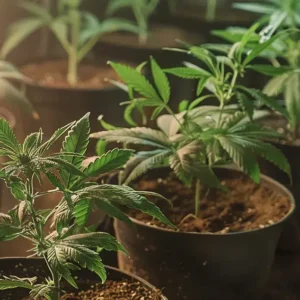
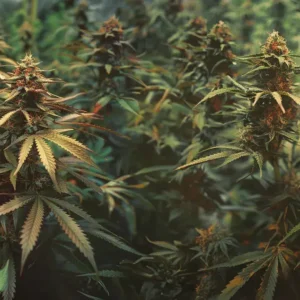

Hi I had a nitrogen deficiency in my Dos si Dos 33 from barneys farm and after 12 weeks in flower there’s no smell yet the terps are finally starting to turn slightly cloudy. However very poor yield with no smell whatsoever. Any suggestions? I’ve reduced my lights to 10 on 14 off. Any help would be great?
My plant it doing the light yellow an old fallin off but the top cola fan leaves aer too and the bud shoots
When u are talking about soda is Pepsi or come or rc
Leaf is 2 different colors of green do you know what it could be?
How often should i apply plant booster to plants?
So if grow boost will fix nitrogen deficiency how often do I feed it to my plants??
Great website.
Please would you send me your grow Bible!
A big thanks.
The grow biblke is downloadable all over the website. 🙂 Happy growing
I just want to say a big Thanks for all the great advice you have to share with us. I’ve been growing almost as long as you bob, and still i am learning new things about Mrs. Maryjane. I’m 4 weeks away from starting my 8 white widow Auto’s I picked up. Wish me luck . Many Thanks
So I’ve been growing. 5 GSC extreme autos I purchased last year from you and things are going fairly well. I’ve made a few mistakes And Have rebounded ok. Im in the 3rd week of flower and the one Plant that Has shown nitrogen Deficiencies is becoming yellow,orange, and purple more And more each day while the others are lush green WITH big bud development and the start of Seeing the frosty glow Of Trichomes gracing the colas. Ph the water to 6.7 And the soil ph is close to the same. Ive used only organic dry ammendments and watered when dry. Temp 75° And humidity 50% on average. Last top dressing was two Days ago with 4 8 4 and a 3 12 0 fishbone meal for bloom boosting. Will that plant recover? I have also tried a low ppm foliar feed derived from kelp on the sick plant to help revive it before it’s to late. What can I do or is doing nothing from here on out the best way ?
Chuck, We are not set up for Q and A grow support here in the blog. it is meant for comments. Go to: ilgmforum.com for expert and friendly guidance for youe grow. One thing. In flower you do not need to be adding Nitrogen, if you are using an organic or super soil.
I have a real bad nitrogen problem I’m giving it some nitrogen trying to get it to regrow
Great info very helpful!
Hello Robert, I was wondering if you still happened to carry the flower power start, bloom and grow and the thc boost for $39.00 if so please email me back with an address.
We still sell them William! Feel free to place your order here: https://ilgm.com/collections/nutrients
My entire plant keeps going yellow on Week 7! Both are autoflowers; one grown in a Solo cup & the other in a 3-gallon fabric pot. I thought the first one did that because it was confined to the small cup but apparently not. The only thing I did differently was add a 20-watt LED light over the weekend…could that have increased the plant’s need for nitrogen or something? I’m growing in soil w/ CFL bulbs (84 watts total). No bottled nutes, just things like diluted urine, potassium humates & grass tea. Works great until Week 7 apparently.
I’m talking overnight 85% of the plant’s leaves went from green to bright yellow…only the inner bud sites are still green. One of the fans fell off as well. I am shocked this has happened a second time in the larger container. I didn’t feed or water them for at least 2 days leading up to the change. Been checking my pH more often than not. These are two entirely different strains of cannabis too. Harvest isn’t supposed to happen until Week 10 or 11.
Why would a plant suddenly starve for nitrogen in flowering in a matter of hours? Do you think it’s the weak LED light I’m adding at that time or just a coincidence? I assumed nitrogen deficiency was more gradual than this.
CBDIVA,
You really should join our support forum. I think you would enjoy the friendly sharing atmoshere and learn a bunch. 🙂
Well, yellowing that fast can be because the plant media got too dry, and the leaves gave up their moisutre to keep plant alive.
The lack of light intensity could also be playing a part as the extremely small amount of lumens you are supplying the plant may not be intense enough for the plants to actually take up the nutrients.
3rd. You have a lot of minerals necessary to grow properly…missing.
Like I said, join our forum where we are set up for Q and A, and better suited to help you make an informed decision. Peace 🙂
my plants are flowering and on week 4. for about the last 3 weeks the growth has slowed and the leaves are droopy, very dark green, and some have a glossy, waxy look on the top surface. I haven’t fertilized for three weeks suspecting a nitrogen toxicity. please advise.
curt,
I advise you to go to: ilgmforum.com and allow us to help you. We are not set up here to have continued discussions and I have a feeling this will be more of a Q and A, than a one answer deal. See you there 🙂
I have plenty of good horse manure, how can I add it to my plants growing outside in pots in southern Spain. Thank you.
Anna,
You should mix up manure with soil and other amendments prior to adding to a pot. Another thing to know is that the manure needs to be cured for 6-12 months before adding it to your soil
Manure os too hot to be used immediately, and can burn up the root zone if not properly cured. If you add a little to soil, you might be able to try it on one plant and see how it does.
Happy growing.
p.s. I suggest you find a composting book to help guide you.
How much N should you feed and how often? 1/16th of a pound of actual Nitrogen per plant every 2 weeks ???
Is urea the best source?
Fred,
There is no magic amount of fertilizer (nitrogen) to add. First of all, it depends on the size of your grow. If you are taking a measured asmount of Nitrogen and adding it to an acre; You would have one value. If you are addibng Nitrogen to one plant; That would be a vastly different value.
I suggest you buy a trusted powder formula, and follow directions mixing it into 5 gallons or whatever reservoir size you prefer, and you will be happy. We sell an awesome powdered nutrients system. Easiest nutrients I have ever used. Or; Many brands on the market sell powder. Happy growing.
Most people consider urine an emergency nutrient, but some growers actually use it all the time.
As I always say; This is a matter of personal choice. What do you want to do? 🙂
Thank you for including “urine” in your list of nitrogen solutions. People need to get over their aversion to this because it’s an excellent (and free) organic fertilizer. I dilute mine at a 12:1 ratio & it perks my plant right up. The NPK ratio is about 11-1-2 on average.
I’ve suddenly encountered a rapid, severe nitrogen deficiency in Week 7 (from seed) after applying some banana tea fertilizer. Don’t know how it turned my leaves yellow & crispy virtually overnight, but it did. The buds look great but now I’ve got to deal with a massive nitrogen problem. Hoping to halt it before it kills my whole plant. I don’t have many leaves to spare on this short autoflower!
Wow, talk about an article that sends you off on a terrible path! lol. Not one of those images is a nitrogen deficiency!!! Then on one you put ‘nitrogen deficiency before harvest’??? LOL..plants don’t use nitrogen just before harvest anymore! Wow..do your research people..this article is completely wrong in every sense! 1st image is either a sulphur or iron def, the next is a potassium def, and the one before harvest is normal. Who writes these fake articles? lol
Joe,
You are just so full of yourself. actually; It is a Nitrogen deficiency. We know this because we starved the plant of Nitrogen in order to create the issue for the article.
2ndly, The plant will uptake Nitrogen as long as you provide it. Seems it is you that really should do some more research.
Good day, Sir.
Just started my first plants but stock is very week just got their first leaves is this a sign of not enough nitrogen have them supported up with Bobby pins lol
Douglas,
Seedlings do not need Nitrogen until they have 4-5 true sets of leaves. I strongly advise you to read our free grow bible, and to join our support forum. We have many helpful members and expert alike that would help you learn to grow successfully, and you have a lot to learn my friend. See you there 😀
sign up!
My girls are 6 weeks into flower and the budding is going great. My concern is a very rapid yellowing of the lower leaves and on one plant they are turning as they go up the middle of the main stem. I think they loosing faster than gaining, I’m trying to decide if a little nitrogen would help or hurt. Suggestions?
‘@Pat Lyn; this is totally normal in the later stages of flower as your plant begins to utilize the remaining nutes from its leaves. Your are getting close to harvest time and should check the trichomes using a microscope, when they turn milky to amber in color, chop away..
I had a slight nutrient burn on the tips of the leaves followed up by some mites I thought I had resolved all of the issues and about 5 days ago the yellowing you described almost exactly in nitrogen deficiency hit about a dozen of my plants my question is will a nitrogen boost be complicated by my recent nutrient burn.
Keith,
You mention nutrient burn, and spider mites, and yellow leaves…Not sure where you are going with this. The blog is not as good as our support forum for assisting growers to overcome their grow related issues. !latewood when you get there.
Hi I believe I have a nitrogen defiencey in (2weeks) flower is this too much or to less nitrogen which I causing my yellow weak leaves failing off? Does anyone know of a solubable solution ? Is it too much. Nitrogen or too less?
W,
In the 2nd week of flower and depending on your nutrient system; Leaves may yellow and ide off due to being used up by the plant.
I suggest you download and read our free grow bible.
I also strongly suggest you join our free grow support forum where we have many friendly and informative members willing to help. I will help you too; “Post my name in the titile” 😉
I bought some ak47 seeds and they are growing good I hope,my only question is I have ordered the grow bible but never comes to my email (why)
May be a dumb question to you, but did you down load ? My download took almost 2 hours to completely show up on my computer. May be this may help, if not , just trying to help
I’ve tried to get the girl Bible four times I never can get it either
picture with caption Nitrogen Toxicity , but when clicked it talks about Nitrogen deficiency
Jperz,
I believe you have a grower deficiency. Plant needs to be on a consistent schedule throughout their entire grow cycle. Growing part time will not yield you very much for the effort.
I advise you to join our support forum. We have many knowledgeable members and experts always willing to help. 🙂
Alright here is the thing I started growing a plant I water every now and again there was this time I didn’t water it for weeks then when I went to go check on it and the bottom leaves were yellow and the one top one was green so do I have a nitrogen deficiency
Fertilizer mixed into soil generally needs to be replenished at some point. This is more a matter of growers choice and grow methods.
Age of the plant also comes into play, especially if plant is really young.
when repotting would it be best to have fertilizers mixed into the soil rather than to start pumping nutes after the transplant
The leaves that are damaged are never going to look good again.. The best thing to do is monitor the new growth, to see if it is healthy.
Changing from one odd fertilizer to another is not going to help. There is no way you should have a Nitrogen deficiency with the fertilizers you have been using.
Good Luck. 🙂
I have a bit of a problem with my girls. They are 7 weeks and were doing great till the bottom leaves started to turn yellow,I started using a fish emulsion fertilizer 5-1-1 non burning and is seemed to help alittle at first but then continued to worsen. I have now switched to a 24-8-16 and I started this 1 week ago today and gave them another dose tonight. I know I have a nitrogen problem but I need to know if I should give them more due to the leaves are not up to par. Any idea’s?
You should flush that lady
Which is it though?
[…] will probably look pale or yellowing, and you might also see signs of other leaf discoloration. A nitrogen deficiency is almost always at fault, and this will make the leaves include brown with the yellow, and will go […]
[…] people mistake a molybdenum deficiency for a nitrogen deficiency. The key to distinguishing between the two is noticing where the condition starts. With a nitrogen […]
[…] is especially damaging to your plants because cat urine contains large amounts of ammonia and nitrogen – this will burn your plants. If you ever see your cat (or the neighbor cat) peeing on your plants, […]
[…] else its yield will not be optimum. Three foundational nutrients that you will need to focus on are nitrogen (N), potassium (P), and phosphorus (K). The fewer these nutrients, the less weed you will […]
If and when you ever have to flush your entire medium; Or, as in this case, rain washed out your minerals, you should re-pot with fresh soil. Arbitrarily dumping all kinds of different Nitrogen elements to the mix is going to create an imbalance. It is possible that the only issue was the plant got over watered during all that rain. :).
[…] Nitrogen deficiency […]
My best plant went from healthy to barely alive in four days! I thought it was a nitrogen def so I started treatment on day one. No matter how much nitrogen I gave it wouldn’t heal her & I tried organic blood meal, urine, & miracle grow. The only thing I can think of is after three weeks of rain it washed all the nitrogen out of the soil & when I did nitrogen her up it was locked out. After a flush of nothing but gallons of rain water I retried to solve the problem with no luck!!!! :'( RIP Medusa
I have a problem with mine absorbing nitrogen due to high PH (alkaline) need to balence the ph and it should start absorbing again.
Clean your room with Grow Clean!!
Do u have any samples?
thanks for guide